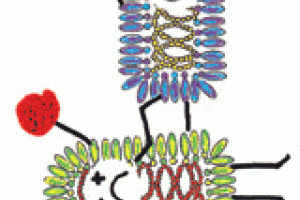Piles of Ancient Poop Reveal ‘Extinction Event’ in Human Gut Bacteria
Science Magazine
 With advances in genome sequencing and computational tools to analyze genomic information, researchers are able to estimate that about 8 percent of the human genome is made of sequences that originated as invasive retroviruses. To put that number in perspective, genes make up about 1 percent to 1.5 percent of your genome.
With advances in genome sequencing and computational tools to analyze genomic information, researchers are able to estimate that about 8 percent of the human genome is made of sequences that originated as invasive retroviruses. To put that number in perspective, genes make up about 1 percent to 1.5 percent of your genome.
Spread the word